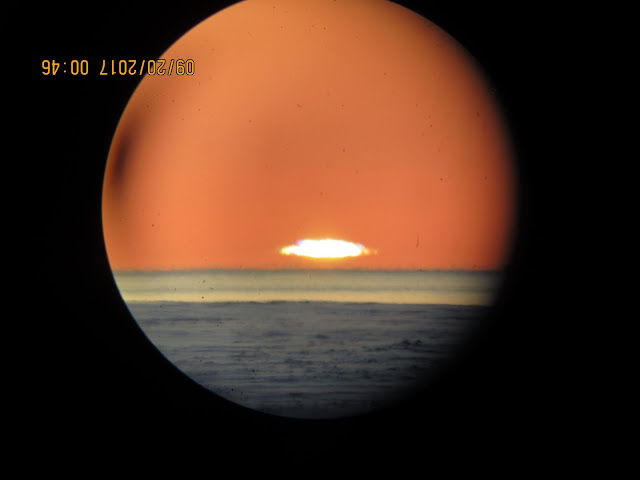~Each winter is unique, 2017-18 is set to be dry in most parts. With normal cold and abnormal warming in about equal distributions.
~ The mystery of the warming Russian Northern Urals.
Elegance in darkness, winter rises from frozen grounds, left without snow it starts later, laced with a thick layer it seems to manifest weeks earlier. The larger question to ask is whether deeper earlier snow brings the bitter coldest winter.
If we look at current data, compare to winter 2016-17, the answer to that question is a likely NO:
Air areas marked in brown are Cold Temperature North Poles (CTNP's), 2 of them, one over the CAA the other hovering NE Siberia. Winter 2016-2017 main Arctic feature was the extreme North Atlantic snow dump from Atlantic Cyclones heading strait towards Russian Urals. This meant a greater injection of moisture towards Northern Greenland and central CAA (Canadian Arctic Archipelago). As a result there was a double the normal layering snow carpet. This prompted an earlier onset of CAA winter, but over the long run reduced ground surface cooling.
Current state of the art land refraction observations tend to agree that the beginning of winter 2017-18 is substantially colder over the CAA because of the relation of earlier more snow on ground blocking the heat which would come from a warmed by summer permafrost :
As a result, places like Ottawa Canada, New England USA, England UK and NW Europe
felt the full blast from Gulf of Mexico and South Atlantic heat.
Temperature anomaly map of NASA GISS describes beginning of winter 2017-2018 quite well, the heat injection to Arctic in 2016-17 has slowed, it is still warmer, but nothing like 2016-2017:
October 2016-17. Here we see the effect of the CTNP cells with a different morphology. The heat injection towards Northern Central Russia has basically vanished because it was mostly spent feeding the Arctic heat wave.
So the location or lack thereof of snow on the ground literally steers the Global Circulation. But that is not a constant relation, if snow cover starts really early in autumn, this will generate a cold temperature zone, the center where warm air gravitates. If the snowfall stops for a long while, warmed by summer permafrost will be exposed and this warming source will dull's winter's might. It may sound off, but snow sublimates and compacts for the greater part of the long Arctic night world. If not replenished, mid winter would warm for a while then the ground frozen hard by exposure with radiation to space would be a source of devastating cold air. If there is greater snow cap on ground instead, winter would appear brutal early but much warmer at end, because the ground didn't loose so much heat, and would help melt light reflective snow earlier. A very much similar thing happens on sea ice, but more radical, a thicker snow layer on sea ice would make it thinner till sunrise from long night, compelling melting even faster come late spring.
At present, 2017-18 seems to tend going towards a very warm Euro-Asian Arctic winter,
while CAA is coldest, we observe if the cut off of snow supplied from the North Atlantic by way of the the North Pole continues, if so, permafrost will freeze hard, sea ice will thicken more, a very cold CAA CTNP will dominate weather as is for quite some time in the foreseeable future. Meaning the October 2017 NASA GISS anomaly map may twin or thrice repeat for November and December 2017. WD November 17, 2017




















